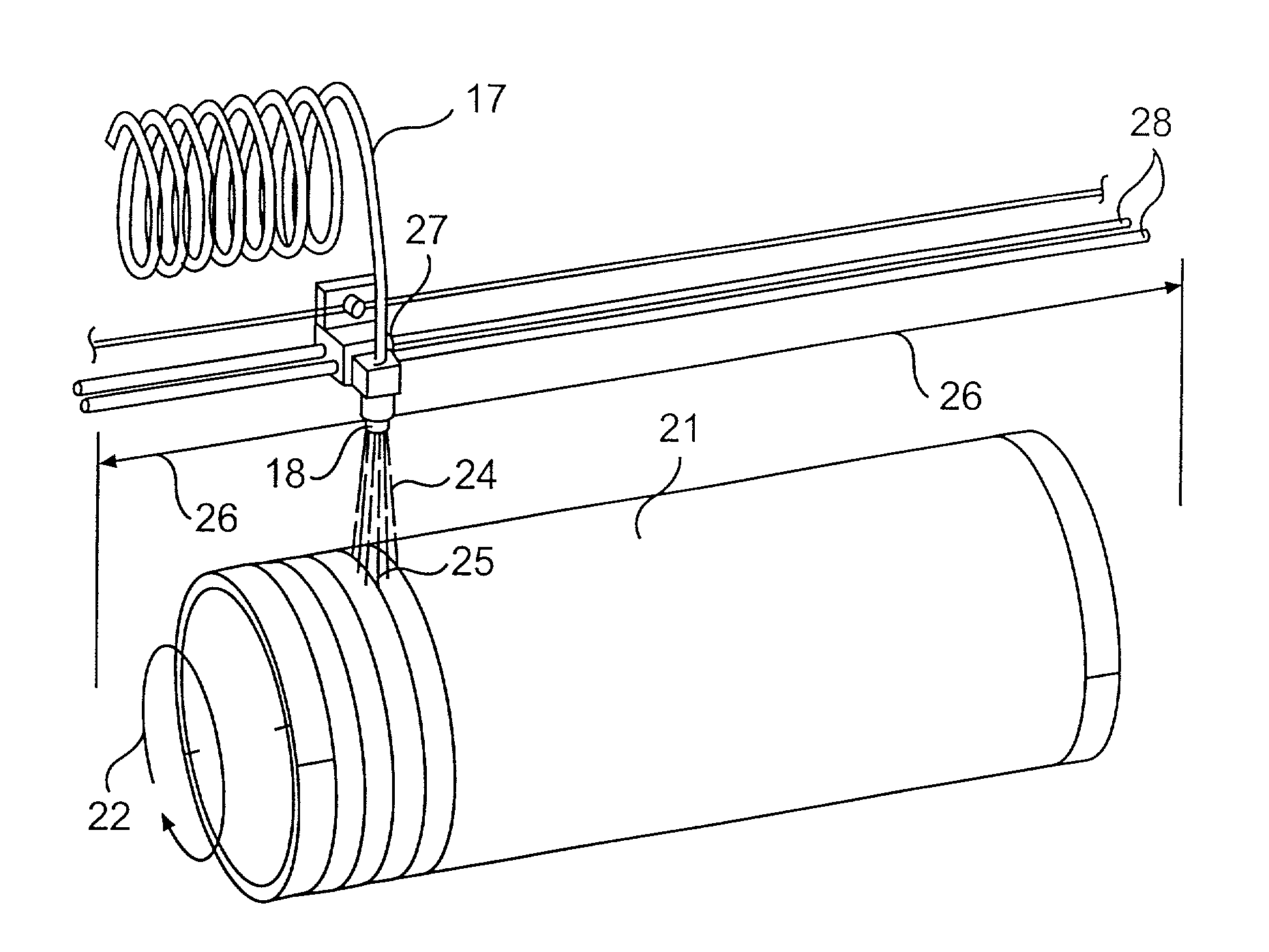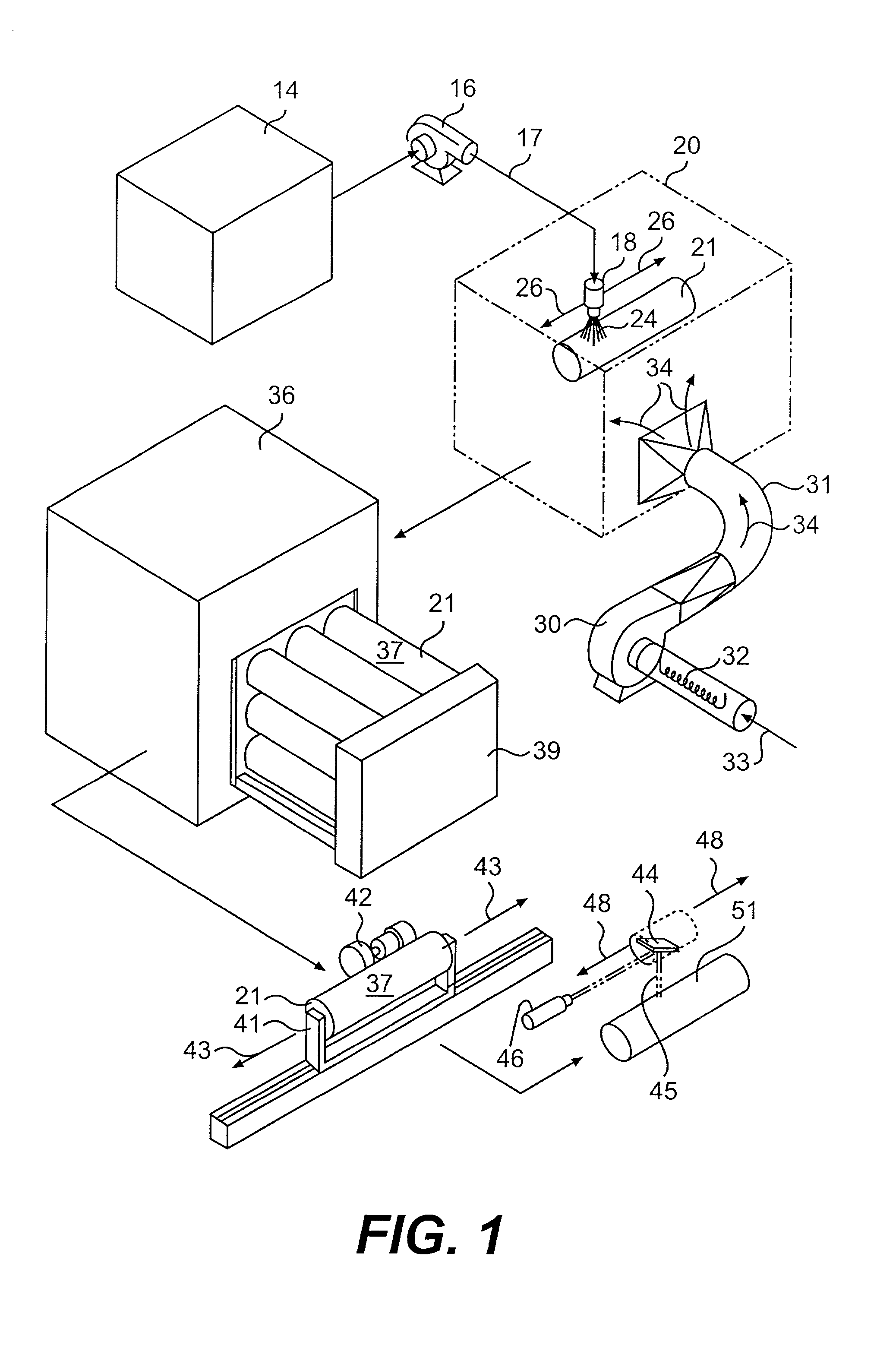Printing sleeves and cylinders applied with a photopolymer composition
- Summary
- Abstract
- Description
- Claims
- Application Information
AI Technical Summary
Problems solved by technology
Method used
Image
Examples
example
[0055] The ability of a liquid photopolymer composition to be sprayed onto a seamless printing sleeve was demonstrated. A liquid photopolymer composition was first formed according to the present invention to include 45.44% by weight ethanol, 30.2% by weight photopolymer, 13% by weight monomers bonded to the photopolymer, and 11.36% by weight other additives including viscosity-modifying monomers, photosensitizers and photoinitiators.
[0056] In particular, a 25 inches.times.32 inches.times.0.038 inches sheet of BASF NYLOPRINT.RTM. S / 83, a photopolymer, an amide, acrylamide-based photopolymer of about 50 to 60 Shore D hardness, was initially provided. As known, such sheets are provided on one side with a sealed steel backing measuring 0.010 inches thick and are imbued with between about 0.1 to about 0.5% by weight photosensitizers (e.g., potassium dichromate) and 0.1 to 5.0% by weight photoinitiators. A carrier solvent, such a solution containing 80% by volume denatured ethanol or eth...
PUM
 Login to View More
Login to View More Abstract
Description
Claims
Application Information
 Login to View More
Login to View More - R&D
- Intellectual Property
- Life Sciences
- Materials
- Tech Scout
- Unparalleled Data Quality
- Higher Quality Content
- 60% Fewer Hallucinations
Browse by: Latest US Patents, China's latest patents, Technical Efficacy Thesaurus, Application Domain, Technology Topic, Popular Technical Reports.
© 2025 PatSnap. All rights reserved.Legal|Privacy policy|Modern Slavery Act Transparency Statement|Sitemap|About US| Contact US: help@patsnap.com



